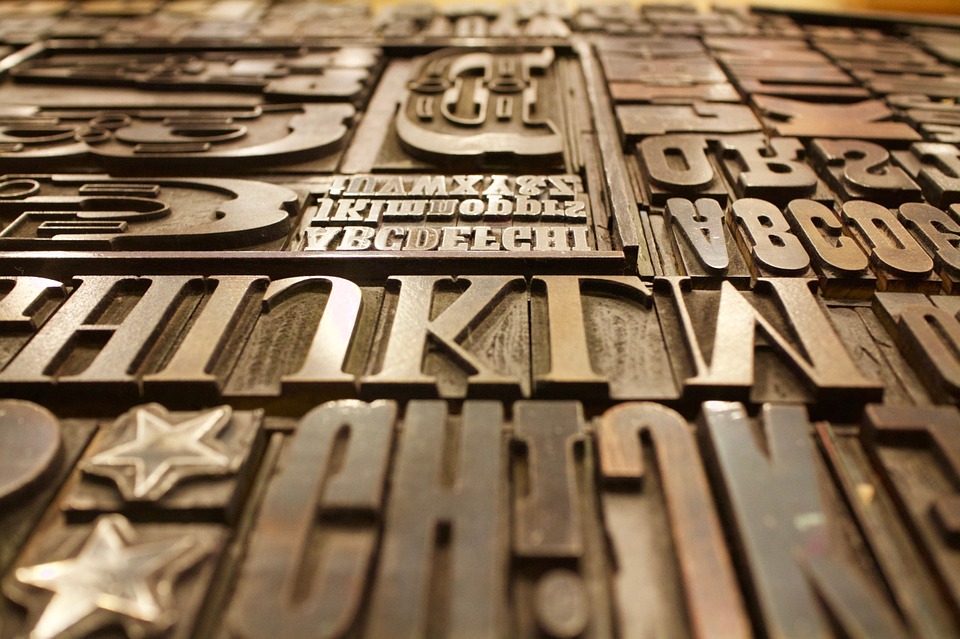Just how important is typography? We already know what NOT to do (I’m looking at you, Comic Sans) and there are tried and true selections like Helvetica, Garamond, and other classic typefaces that make it on boundless lists of “When in doubt, use…”. However, there’s a little more to it than that. A typeface can complement or undermine a brand’s tone of voice almost immediately.
Classically trained and experienced designers are trained to immediately rule out certain typefaces and hone in on certain families that help to express a message more concisely than the words themselves. How exactly is this done? They spend the time analyzing fonts that may “look exactly the same” as dozens of others and hyperfocus on the little nuances that define the style of the typeface. While words like “x-height” and “serifs” might mean absolutely nothing to most, these are keywords designers live by.
Many logo designs are hinged on the selection of the perfect typeface to either serve as the foundation for the brand or to complement it so completely, that the brand feels naked without its inclusion.
For many small and mid-sized businesses typography is more of a challenge. The budget may only call for the eye of the designer (or agency) during the sometimes expensive branding process and then the buck stops there. What about internal company documents, or the newsletter HR sends out at the end of every month? Most agencies worth their weight will give internal staff guidelines on what typefaces to use that are easily accessible, but if there’s still that errant newsletter or company memo that makes it out with “Comic Sans”, it can dilute the brand.
Everyone can benefit from a little typography education, especially those working for companies with too tight a budget for brand management. Many word processors offer templates with type suggestions that can turn a boring document into a professional one at the very least. Utilizing these templates aren’t a crime, especially when you choose one with your brand in mind.
Google Fonts, launched in 2010, has over 800 different fonts that are accessible to everyone and easily downloadable (check with your IT staff). It gives millions of users a variety of high-quality fonts at their disposal outside of the typical typefaces in their operating systems by default. The key, however, is selecting the right ones to use.
Always follow your brand guidelines
If you have guidelines for your brand, absolutely use the typefaces outlined in them. The primary benefit of having these guidelines is knowing that a specialist or highly qualified team spent hours selecting the best typefaces for you to use. Take advantage of their knowledge and expertise and use the fonts they’ve outlined. It’s the quickest and most direct way to ensure you’re on brand and sending the right message.
When in doubt… look at what others are doing
When you don’t have the budget for professional designers and need to make the best of your current situation, it may be best to see what others in your industry are doing and make some assumptions for yourself. Are they formal? Are they scrappy? Are they modern? Observing is the first step in decision-making in design. The key is to look at the piece you’re working on and assessing whether or not it fits what you’re trying to say or what you’re company is trying to say.
Try looking at type as shapes instead of words
If you have paragraphs of text or are instead looking for the perfect treatment for a headline in a newsletter you’re writing, it helps if you look at your type as shapes. Is it too angular or too soft? At first glance, you’ll know if a font is wrong for the job. Trust that instinct.
Readability and purpose is paramount
No matter which typeface you choose, if it isn’t readable, the purpose is lost. A highly stylized and scripted font may not be appropriate for a meeting schedule but it might be great for invitations. Invitations generally have fewer words than traditional documents, and therefore scripted fonts display better on them. Not to mention their purpose is completely different than a meeting schedule.
Who has the time for all this?
Not everyone certainly. If you’d rather spend your time working on items more important to you than picking type for your business or organization, maybe it’s time to hire an agency to make the visual decisions that bring your brand to the next level. You’ll be glad you did.

